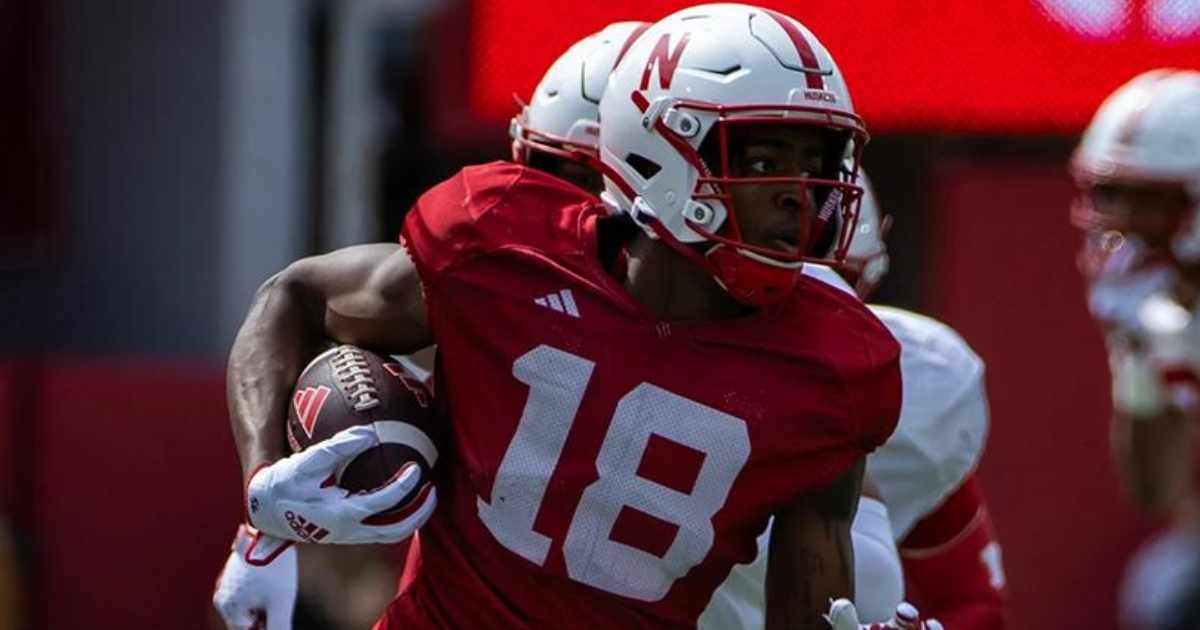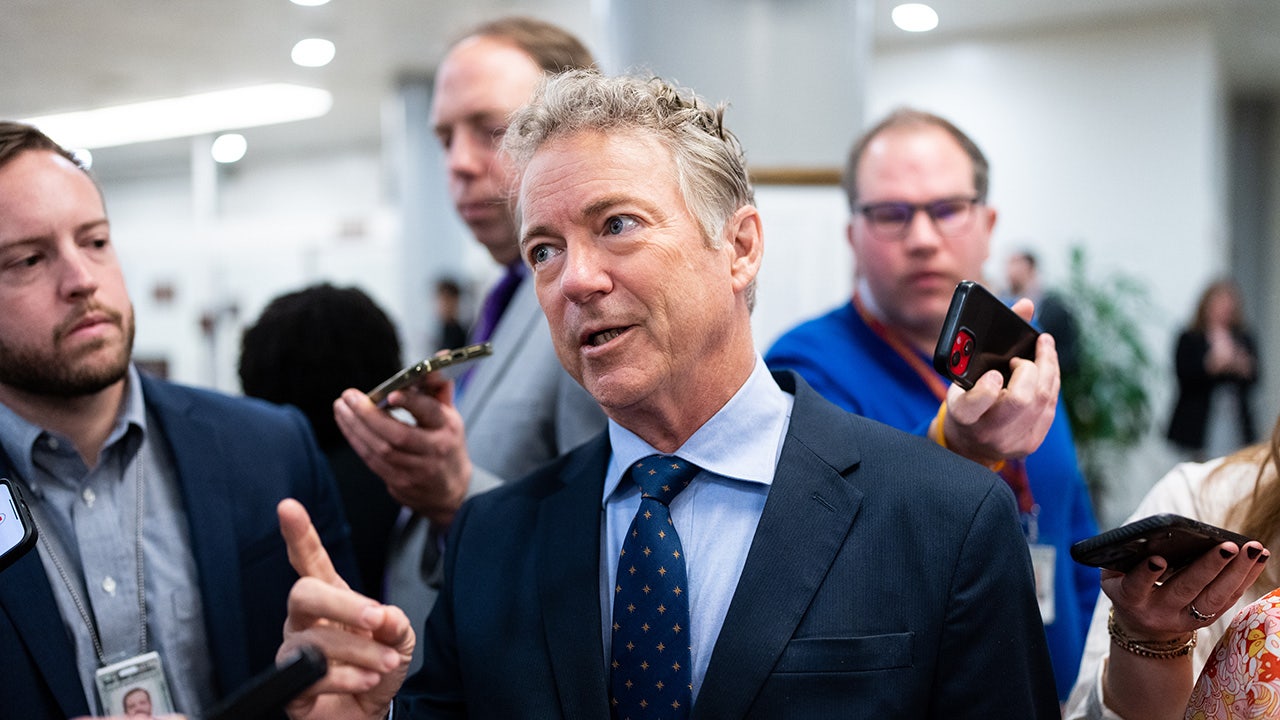Nebraska
The need for environmental justice reparations in Omaha • Nebraska Examiner

The freeway that bifurcated North Omaha was marketed as an infrastructure development that would benefit all of Omaha. However, it solidified segregation, dramatically decreased Black homeownership and led to the amplification of environmental injustice.
For the last two years, I have been working as a research assistant for the Omaha Spatial Justice Project. As part of that project, I helped develop the project’s 1920 Black homeownership map, which shows a high concentration of homeownership along the North Freeway. Black homeownership reached a peak in 1950, when for the first time, there were more Black homeowners than renters.
Many homes were demolishedfor the freeway construction, stripping Black homeowners of their already limited access to generational wealth. The areas with rentals were left mostly untouched, whereas the neighborhoods that consisted primarily of homeowners were the ones replaced by the North Freeway. This demolished housing was not replaced, and due to persistent racism, Black homeowners received little to no compensation and found it difficult to purchase homes in other neighborhoods.
North Omaha was cut off from the rest of the city, resulting in limited access to public transportation and basic needs and services. Because of this, as Omaha developed further, food deserts, or areas with a decreased or complete lack of access to affordable healthy foods, manifested as a concern. This was exacerbated by the national trend of grocery stores shifting to suburban areas which began in the 1960s. While grocery stores still existed in North Omaha, new stores with healthier inventory were not accessible to neighborhood residents, resulting in disproportionate access to good quality food increasing health risks.
The North Freeway displaced thousands of Omaha’s Black residents, restricted access to homeownership, and led to an increased prevalence of environmental injustice issues that can be linked to present-day inequities. Because of this, there is a need for restorative justice.
In 2016, Catherine Millas Kaiman, a civil rights and environmental activist attorney, presented a national model for community-based reparations to achieve justice, by addressing issues of environmental injustice through funding awareness campaigns and education. Another path to justice is to provide reparation payments to relatives of individuals whose homes were destroyed. Affected individuals could make a claim examining how far below market rate compensation payments were to then make up the difference with interest.
Omaha’s construction of the North Freeway caused displacement, along with accompanying housing discrimination, amplifying environmental injustice. There is a critical need in North Omaha to address the problem of food deserts, including a lack of food availability as well as better access to affordable healthy food.
Omaha must come to terms with the damage done through a community-based reparations solution. Washington, D.C., provides a national example of how one city chose to confront the issue of food deserts. After identifying the locations of food deserts, the city offered financial incentives for businesses that opened grocery stores in those areas. The City of Omaha needs to implement a comprehensive policy solution to address this pressing need for the long-term health and stability of the community.
Any policy solution must address the historic wide-scale dismantling of Black homeownership through a housing reparations program. A national example of this is Evanston, Illinois, where the city clerk in 2019 made a case for housing reparations, and the first program in the country was implemented by the city council in 2021 to compensate the Black community for historical policies of segregation. It’s important to know whether the families that were affected by the destruction of their homes via the North Freeway believe that an injustice took place and reparations are needed.
Recently, there have been increasing plans and funding for development in North Omaha. Before the city implements redevelopment, we need to right the wrongs of history. As Omaha moves forward with new plans for development, there is a need to address the task of increasing Black residents’ access to homeownership. For Omaha to move on, we must address this difficult past.
The Omaha Spatial Justice Project is providing documentation of historic discrimination in Omaha by mapping racially restrictive covenants. Residents affected by housing segregation, the lack of access to homeownership and environmental injustice need a space to propose their solutions for reparations. The City Council and Mayor’s Office need to seriously consider and creatively implement these community policy solutions.

Nebraska
Principles of good tax policy • Nebraska Examiner

Gov. Jim Pillen is embarking on a policy campaign to sell a new plan meant to lower property taxes. He’s hitting the road making his pitch to voters and state senators in communities around the state.
If you have planned a summer vacation, you know that a great trip does not happen on its own — it takes vision, planning and strong execution. The same is true for state tax policy. Before embarking on a restructuring of Nebraska’s tax system, it’s important to set goals and map out the path to our ideal destination.
We can all agree we want to arrive at a destination where Nebraska has a tax system that allows individuals and businesses to thrive, for our state to compete with our peers, and a system that is fair and equitable for all. How we get there, and what principles we follow, are the primary questions at hand. Achieving meaningful tax reform requires more than a big goal; it must be built upon sound tax policies that will endure for generations to come.
Prior to 2023, Nebraska consistently ranked high among peer states for income tax rates and property tax burdens. Unfortunately, budgets were tight during that time, which limited fiscally responsible means for reducing these taxes. Regardless, our state leaders knew Nebraska had to perform better if it was to successfully compete with peer states for business and job growth and personal prosperity.
Finally, in 2023, Nebraska had its shot. Due to a revenue surplus, in part because ofthe COVID crisis, Nebraska was able to slash its income tax rates to 3.99% over five years and also eliminate community colleges’ ability to levy property tax. These changes significantly enhanced our state’s tax code; however, they did not happen overnight, and they did not happen by accident. Despite this reform, Nebraska still has the seventh highest property tax rate in the country. As we look forward now, we need to consider what goes into good tax policy, and how Nebraska can ensure we get the best outcome for our state.
Budgetary restraint
Foundational to any good tax policy is budgetary restraint. Although Nebraska was able to accomplish significant reforms due to excess revenue, only budgetary restraint can provide sustainable tax relief. That is, future tax reforms should not rely on a tax shift, but instead focus on capping local spending growth and promoting budget restraint.
Simplicity
Good tax policy is also rooted in simplicity. A tax code that is easy to understand and comply with reduces administrative costs and economic distortions. Nebraska’s recent reforms aimed to simplify the tax code by reducing the number of brackets and lowering rates. Eliminating the community college property tax simplified the overall property tax system. Future reforms should continue this trend towards simplicity, making the tax system as straightforward as possible while ensuring that elected officials are accountable to the taxpayer.
Transparency
Transparency is another critical principle of foundational tax reform. A transparent tax system ensures that taxpayers understand how their money is being used and can hold government officials accountable. Transparency also means keeping accountability at the level of government most accessible to the taxpayer. This means local decisions should stay in the hands of local elected officials, not bureaucrats in Lincoln. Nebraska should continue to prioritize transparency, building trust with taxpayers and ensuring that public funds are managed responsibly.
Economic growth
Lastly, economic growth should be a guiding objective. Tax policies that promote investment, job creation and economic expansion benefit all Nebraskans. By keeping tax rates competitive and reducing burdensome regulations, Nebraska can attract new businesses and retain existing ones, driving economic prosperity. Legislators should reject ideas that raise taxes on business inputs and instead focus on policies that spur economic growth throughout our state.
The principles of budgetary restraint, simplicity, transparency and economic growth form the bedrock of sound tax policy. As Nebraska looks to further improve its tax system, these principles will guide us toward a fairer, more prosperous future for all. In the next part of this series, we will explore specific policy solutions to achieve property tax reform, building on this strong and principled foundation.
In conclusion, it is wise to have a clear understanding of the objective before embarking on the journey. For Nebraska, the objective should be statewide population and job growth, business creation and personal prosperity, partnered with state and local spending controls and fiscal policies that help sustain Nebraska’s performance, even through economic turbulence.
Nebraska
Nebraska International Port Of The Plains Inland Port Authority Board discuss progress on rail park

NORTH PLATTE, Neb. (KNOP) – The Nebraska International Port of the Plains discussed the progress on the rail park on Tuesday afternoon.
The discussion centered on the progress of the future Lincoln County rail park located near Hershey. Further discussions centered on a track line that belonged to the Greenbrier Rail Company; the transportation company halted operations in Hershey in 2020, sending 24 employees home.
The company had rail access to re-manufacture, inspect, repair, and assemble rail car wheels, roller bearings, and wheel car assemblies; one of the company’s key clients was Union Pacific. The rail access and facility formerly occupied by Greenbrier.
The Nebraska International Port of the Plains, the entity has the goal of not only having surrounding companies import and export supplies in and out of this facility when completed but to also storing railcars there. As for Nebraska International Port of the Plains chairman Vince Dugan, the reality of this is becoming more and more real.
“Everything is becoming a lot more real. I think we want to coordinate, we want to understand. I think I have a better understanding than I have ever had during the entire process. what we are talking about doing is exactly what the airlines and air carriers do. The airport does not employ the people that take everything off, and the airlines go through a third party, and companies do that, and that is exactly what you are talking about doing with the rail spur,” Dugan said.
The Inland Port Authority discussed tracks that once belonged to the Greenbrier Rail Company but also the products that local businesses could import to the rail park. The board has said that small products will help improve local businesses in distribution as well as their production.
“It’s becoming quite clear to me, and also, I like the specialty product thing because what do we know about specialty products? You get more money for them, you get more value, and that could jump-start us before we consider commodity value products because one thing is for sure we are not going to be the barrier to a successful venture; we are going to make it happen,” Dugan said.
Click here to subscribe to our KNOP News 2 daily digest and breaking news alerts delivered straight to your email inbox.
Copyright 2024 KNOP. All rights reserved.
Nebraska
Matt Rhule details what Isaiah Neyor brings to Nebraska offense

Addressing Pushback On Ranking Nebraska Cornhuskers, Matt Rhule In Top 25 Post Spring Rankings
Nebraska is looking to add a more reliable and proficient passing game starting this season. Several additions could help the ‘Huskers to do that, including the pickup of WR Isaiah Neyor.
Matt Rhule explained Neyor’s potential impact in Lincoln during a recent interview on ‘Always College Football’ with Greg McElroy. He noted how their offense is hoping to add a different dimension with a pass attack that they don’t see as much of within their own conference.
“Yeah, I think, when you look at the Big Ten? You put on a bunch of Big Ten games. Then you put on, like, SEC games, obviously I’ve been in the Big 12. I think the difference you see is explosive passing games,” Rhule said. “Like, there’s just not as much of it in the Big Ten. There’s a lot more underneath passing games, controlling the middle of the field. Maybe some of that has to do with weather at times.”
That’s where a receiver like Neyor comes in. He can be a vertical threat for Nebraska and be a weapon that can get them on top of and past defenses that are playing them in certain looks.
“What we wanted – and Isaiah was a guy that could take the top off in coverage. Two years ago here, they had Trey Palmer. They went to Iowa, beat Iowa and really it was because he ran by them,” said Rhule. “Neyor brings to us a guy at six-foot-three, 220 pounds who’s a 4.3 player. He has got good ball skills.”
“If you’re going to try to play man coverage, we want to try to run by you. If you’re going to try to play quarters coverage, we want to try to run by you. We weren’t really able to do that very much last year – here and there we could,” Rhule said. “That’s what Isaiah brings.”
Neyor has spent the four seasons of his collegiate career at Wyoming and Texas with two apiece with the Cowboys and Longhorns.
In a pair of years in Laramie, he caught 52 passes for 1,126 yards and 12 touchdowns. Almost all of that came as a redshirt sophomore with 44 receptions for 878 and each of his dozen scores.
However, his two seasons on The 40 Acres weren’t what anyone wanted them to be. Neyor didn’t appear in his first year in Austin after a knee injury in fall camp cost him the entire campaign. He then only appeared in one game for the Longhorns last year, which was the season opener against Rice, and caught just one ball for 14 yards.
Now, with Neyor joining Nebraska in the portal this offseason, he’ll look to add to a passing game that struggled last season. The Cornhuskers completed less than a dozen throws a game at 52.1% for an average of 135.9 yards and 0.8 touchdowns from their three quarterbacks. Their leading receiver, Billy Kemp, finished with 35 catches for 310 yards and a touchdown. Thomas Fidone III, although a tight end, also found some success with 25 receptions for 260 yards and a team-high of four scores.
A little life in the passing attack wouldn’t hurt for an offense like Nebraska’s. They’ve certainly tried to address that, though, both at the key position in quarterback and with potential targets like Neyor.
-

 News1 week ago
News1 week agoSkeletal remains found almost 40 years ago identified as woman who disappeared in 1968
-

 World1 week ago
World1 week agoUkraine’s military chief admits ‘difficult situation’ in Kharkiv region
-

 Movie Reviews1 week ago
Movie Reviews1 week agoAavesham Movie Review
-

 Education1 week ago
Education1 week agoVideo: Protesters Scuffle With Police During Pomona College Commencement
-

 World1 week ago
World1 week agoEU's divided right wing can disrupt if it finds greater unity: experts
-

 News1 week ago
News1 week agoNevada Cross-Tabs: May 2024 Times/Siena Poll
-

 World1 week ago
World1 week agoPro-Palestinian university students in the Netherlands uphold protest
-

 News1 week ago
News1 week agoStudent protests caused mostly minor disruptions at several graduation ceremonies
/cloudfront-us-east-1.images.arcpublishing.com/gray/TOV4FITHCJCRXKKEUKMP2WIX2I.jpg)

/cdn.vox-cdn.com/uploads/chorus_asset/file/25459708/Screenshot_2024_05_22_at_9.08.56_AM.png)











